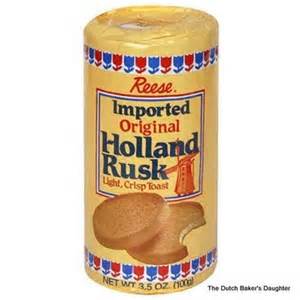What is it about the word “biscuits” that, if spoken in the kitchen on either side of the “pond,” as my mother would say about her English heritage, causes us to see two completely different things? For us living on this side, a biscuit in the southern states is round and fluffy and commonly eaten as a part of the breadbasket or at breakfast. The status of these biscuits can be a trigger point of family pride as everyone’s mother or grandmother makes the best. Remember, you can’t make (or eat) just one. Biscuits are also the litmus test for worth at any dive diner or family restaurant. I am definitely not talking about opening a box or the instant mix type you can get at the “Barrel” at the next exit on the highway.
Biscuits, in the traditional sense, are made by delicate hands that meticulously blend together fat, flour, salt, sugar, leavening agent and liquid dairy. The cook, chef, and household hands that make these flaky morsels feel the dough and understand that you can’t over work it. Even the cutter used to create the round shape may have some local folklore around it. Brushed with milk or butter, these biscuits are just the perfect thing, whether smothered with sausage gravy or as a carrying case for a slice of cured country ham. A sandwich with the saltiness of cured ham, sweet butter and a moist flaky biscuit has been breakfast for many, and will continue to be a favorite in the future. If you’re asking me, I highly recommend Benton’s hams and bacons.
 For many expatriates or first born sons and daughters who carry the Union Jack in their blood lines, they see something different when someone mentions a biscuit. For them, thoughts of these little pastries might invoke the image of a sweet biscuit with a cup of tea. Or, are they savory biscuits with a hint of sweetness to go with a great piece of cheese? I was recently having dinner at a British Pub in Philadelphia called The Dandelion…
For many expatriates or first born sons and daughters who carry the Union Jack in their blood lines, they see something different when someone mentions a biscuit. For them, thoughts of these little pastries might invoke the image of a sweet biscuit with a cup of tea. Or, are they savory biscuits with a hint of sweetness to go with a great piece of cheese? I was recently having dinner at a British Pub in Philadelphia called The Dandelion…
Side note here. Typical British name calling nonsense. Let’s name the local pub, a place to drink, eat and escape the stress of the work and chores, after the weed you spend your whole weekend trying to eradicate. Bloody futile exercise! Dandelions just keep coming back and pissing you off. So, it’s that little salt-in-the-wound tidbit that is the hallmark of British humor.
Back to dinner, I was very happy with my meal. It included three pints of cask ale, a great pork terrine and fabulous homemade Cumberland sausages and mash. Being “all in” on the meal, I had to also do dessert. No sticky toffee pudding for me. It was the cheese board. By what I had received of the meal and from what the chef suggested, I expected nothing less than an exceptional list of cheeses. Wrong! The cheeses were great, but the biscuits were exceptional. Each one made in-house and designed for each specific cheese pairing: a little nut icebox-style biscuit with a Neal’s Yard Cheddar, a thin shaved nut bread with a white Caerphilly, and the star: a honey whole meal biscuit served with the king of British cheeses, a perfect Stilton.
Why did a simple garnish make me feel so contented and send the meal over the top? It wasn’t the three pints. It was the dedication of taking a simple item, a biscuit, whether the southern US one or this particular semi-sweet one, and chefs putting so much respect into producing it. A perfectly baked and delicately textured biscuit comes from the proper blending of the fats and the gentle handling of the dough. This includes not overly excessive forming, the right amount of resting and an attentive eye on the baking. Too much or too little can make all the difference.
 This is the same for the sausages. The art of the butcher is generally exposed in the sausage. Here in Chicago, our general perception of a sausage is the atypical Italian one profiled in the “Combo” or in various forms on a pizza (depending on the size of your dish). Doug Kahn, at his soon-to-be-closed Hot Doug’s, spent years offering various encased meats to the citizens of Chicago. The English have a variety of classic regional sausages, all of which would have been shown great respect in the “emporium of encased meats” if they had been readily available. And no, I don’t mean out of the freezer section. The frozen stereotypical bangers offered at the “wannabe” pubs across the county do not truly reflect the simple English sausage which, when made with care, can stand up with most. The city of Newmarket in Suffolk, England, my mother’s corner of the world, has its own place in the sausage world. A handful of shops still produce this artisan sausage, which is recognized as a slow food of England. It is an art form that should not be lost to the mass-market producers. Powter’s has been producing their secret recipe since 1881.
This is the same for the sausages. The art of the butcher is generally exposed in the sausage. Here in Chicago, our general perception of a sausage is the atypical Italian one profiled in the “Combo” or in various forms on a pizza (depending on the size of your dish). Doug Kahn, at his soon-to-be-closed Hot Doug’s, spent years offering various encased meats to the citizens of Chicago. The English have a variety of classic regional sausages, all of which would have been shown great respect in the “emporium of encased meats” if they had been readily available. And no, I don’t mean out of the freezer section. The frozen stereotypical bangers offered at the “wannabe” pubs across the county do not truly reflect the simple English sausage which, when made with care, can stand up with most. The city of Newmarket in Suffolk, England, my mother’s corner of the world, has its own place in the sausage world. A handful of shops still produce this artisan sausage, which is recognized as a slow food of England. It is an art form that should not be lost to the mass-market producers. Powter’s has been producing their secret recipe since 1881.
 So, without breaking into a secret vault, I have provided you a classic English sausage recipe. You can play around with the seasonings to create your own country’s flavor profile. The secret of the great British sausage is the addition of rusk or breadcrumbs. Rusk is a particularly dense twice-baked bread originally baked for children who were teething. Those children could chew on it for a long time, and it was the early all-natural holistic pacifier!
So, without breaking into a secret vault, I have provided you a classic English sausage recipe. You can play around with the seasonings to create your own country’s flavor profile. The secret of the great British sausage is the addition of rusk or breadcrumbs. Rusk is a particularly dense twice-baked bread originally baked for children who were teething. Those children could chew on it for a long time, and it was the early all-natural holistic pacifier!
Basic British Sausage
Ingredients
- 5 pound diced and slightly frozen pork butt or slightly frozen fresh ground pork
- 1 1/2 cup water or chicken stock
- 1 cup crushed rusk or very dry breadcrumbs made from only the bread crusts
- 5 tsp. salt
- 4 tsp. fresh cracked pepper
- 1 tsp. ground ginger
- 2 tsp. mace
- 1 tsp. nutmeg
- 1 1/2 tsp. fresh chopped sage leaves
Directions
- If you are going to grind your meat, place the diced meat in the freezer for 1 hour to firm up.
- Place all of your grinding equipment in an ice bath to chill.
- Grind the pork once through a 3/16″ plate and place the ground product back in the cooler.
- Soak the rusk or breadcrumbs in the water or stock with the salt and dried spices for 30 minutes.
- Place the meat and the soaked crumbs in the well-chilled bowl of a mixer and blend until well combined.
- Add the sage and mix to combine. Adjust the seasonings as necessary.
The sausage meat can be used as bulk or formed into patties for a burger option. If you are adventurous, it can be packed into sheep or hog casings and formed into 4″ links. These are great grilled or pan-fried. I like them on a soft roll with a little white cheddar cheese and HP Sauce (British ketchup). If you really want to play with people’s taste buds, why not try your sausage on a buttermilk biscuit? That way you can have the best of both sides of the pond in one bite.
For those of us who aren’t still bitter over that little tea incident, so have a great 4th of July!












